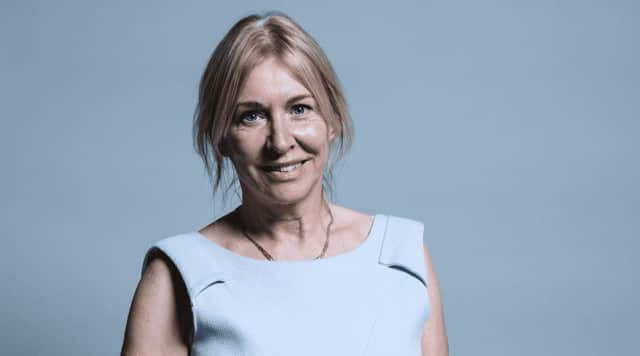Health Minister Nadine Dorries has been diagnosed with coronavirus


Nadine Dorries, a minister in the Department of Health, has been diagnosed with coronavirus.
The 62 year old is now self-isolating after developing symptoms last Thursday (5 March). Health officials confirmed that she had attended a Downing Street event hosted by Prime Minister Boris Johnson on the same day.
Advertisement
Hide AdAdvertisement
Hide AdIt is not clear whether Mr Johnson has been tested after his exposure, or whether he is due to be.
Public Health England said it would advise people who had contact with Ms Dorries - including cabinet ministers - whether they need to self-isolate.
‘I hope I’m over the worst of it now’
In a message on Twitter, Dorries, who worked as a nurse in her early career, thanked the public for their support.
“Thanks for so many good wishes. It’s been pretty rubbish but I hope I’m over the worst of it now,” she wrote.
Advertisement
Hide AdAdvertisement
Hide Ad“More worried about my 84yo mum who is staying with me and began with the cough today. She is being tested tomorrow. Keep safe and keep washing those hands, everyone.”
‘She has done the right thing’
In a statement on Twitter, Health Secretary Matt Hancock said, “Really sorry to hear Nadine has tested positive for coronavirus.
“She has done the right thing by self isolating at home, and both NHS and PHE staff have been brilliant. We all wish her well as she recovers. I understand why people are worried about this disease. We will do all we can to keep people safe, based on the best possible science.”
Rapid rise in cases
The news comes as the number of coronavirus cases in Europe rose dramatically, with more than 10,000 confirmed infections in Italy alone.
Advertisement
Hide AdAdvertisement
Hide AdEarlier this week, the country’s Prime Minister, Giuseppe Conte, enforced nationwide travel and work restrictions, ordering 60 million Italians to stay at home.
In the UK, the Bank of England announced emergency measures to help sure up the economy, as confirmed cases of the virus rise to 382.
The Bank slashed interest rates from 0.75 per cent to just 0.25 per cent - the lowest level in history - in an effort to encourage borrowing.